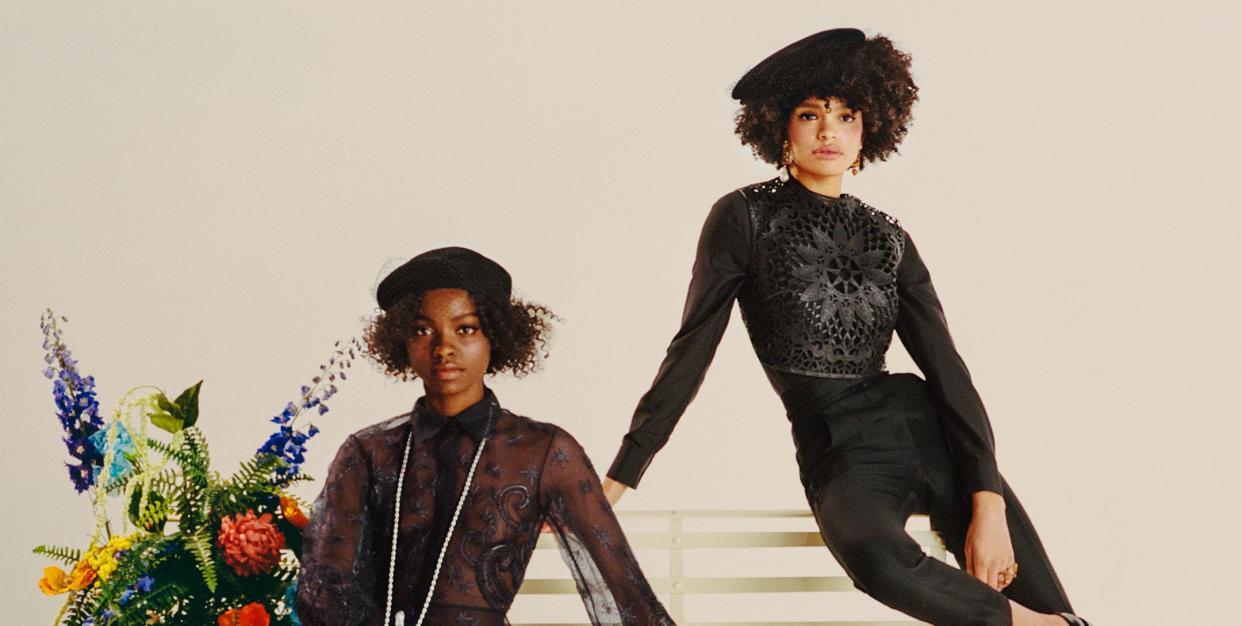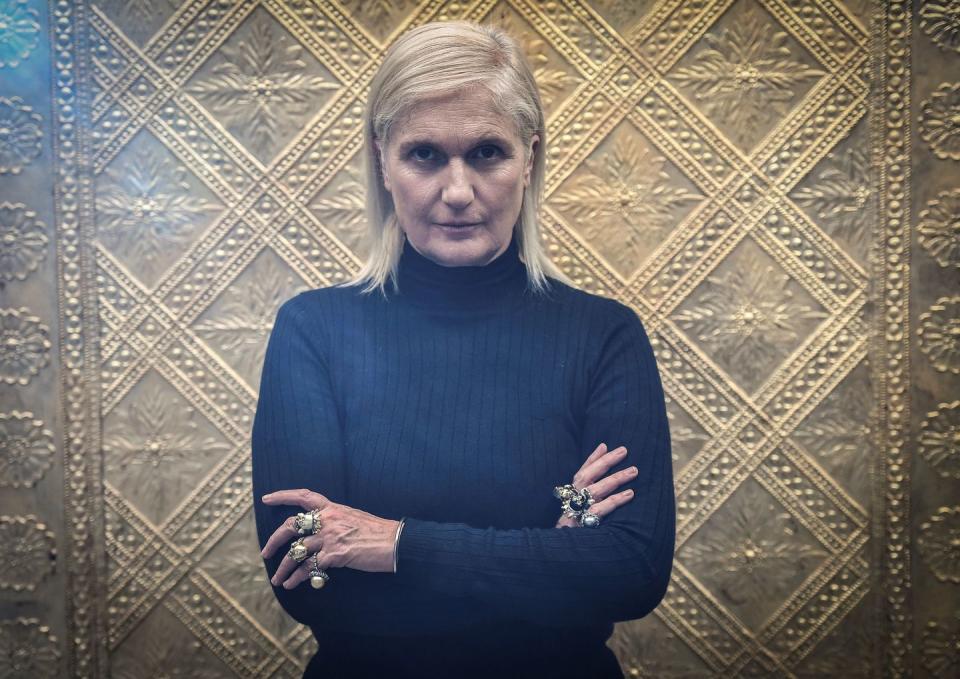Maria Grazia Chiuri: Couture Should Shine in the Bright Light of Day

- Oops!Something went wrong.Please try again later.
- Oops!Something went wrong.Please try again later.
Maria Grazia Chiuri brought a deeply thoughtful, feminist mindset to Dior. Now, the Italian-born creative director of the French house describes for T&C her approach to couture. While an opulent gown for a grand soiree is divine, she says that couture should also shine in the bright light of day.
Given Dior's full luxury ready-to-wear range, why is it important to you to also include a significant amount of daywear in couture?
I believe that the relationship between utility and creativity should never be a compromise, but rather a deliberate use of the rules as a strong starting point for new directions. The way I design couture is a true reflection of what we call “design thinking,” particularly in how I incorporate such a unique and traditional savoir-faire as that of couture.

My goal with the daywear has always been to ponder what fashion today actually is: something to be used on a daily basis, an attitude toward life, more than just a single moment of attention for an event or occasion. If, then, I think of haute couture, I would say that this design is even more personal, “tailored” to those who choose to wear the unique couture pieces. I constantly keep in mind the woman who will wear the piece, and I ask myself what she will be doing when she wears it. The clothing in this [spring 2021] collection is the answer to those questions. Clothing that isn't content to shine only under the chandeliers of a gala or party, but that proudly displays its personality in the light of day.
What makes couture staples compelling to the client?
I think that couture clients are enchanted by the idea of having something made just for them, tailored to their own expectations, and expressing their own desires. It's sort of a final frontier for a style of work that has set rules which never change. This is truly something very special, particularly if it is designed to be part of a daily wardrobe, and therefore to accompany women in [various moments] of their lives.

The post-WWII resurgence of couture is generally credited to M. Dior’s introduction of the New Look. While not a daily basic by today's standards, the New Look changed the course of how a generation of women dresses for day. How important is the historical resonance of that event in defining the couture genre?
The New Look was such an important and complex code, not only for the House of Dior but for the history of fashion as a whole. Every time I think about that hourglass figure with its shoulders, narrow waist and broad hips, a look that sought to overcome the restrictions of wartime, an ode to a softer femininity–perhaps more frivolous, but confident in its value and eager to display it through fashion–I end up discovering something new. And if we look at the current state of fashion, I think that the historical resonance of this invention–because I prefer to speak of an invention, of a forward-thinking development rather than a style from the past–is still so clear today.

Daywear and other “staples” (the LBD for day and evening) have always been intrinsic to haute couture, yet associate couture with visual extravagance rather than with clothes for frequent use. Why?
Before I arrived at Dior, I, too, associated Dior's haute couture almost exclusively with something traditionally spectacular: marvelous, unique, precious, and special creations that were far from daily life and the idea of “staples.” However, as I studied the archives, I realized that Monsieur Dior loved daywear and spent much time experimenting with fabrics and designs from different worlds–masculine elements, for example. [He would] then translate them into creations that perfectly followed the “rules” of haute couture but that were intended to accompany women in their daily lives. My nature leads me to consider clothing first and foremost as an object to be used, enjoyed, focusing not on when and where but rather on my current mood. I therefore saw myself in Christian Dior’s thought processes on daywear and couture.

Photos by Danny Kasirye, styled by Mike Adler, hair by Charlotte Mensah at Premier, makeup by Valeria Ferreira at the Wall Group, nails by Michelle Class at LMC Worldwide, set design by Trish Stephenson at Patricia McMahon, production by Zoe Rose-Davis. Lead image: Dior Haute Couture shirtdress, beret, boots, necklace bag, and rings.
Excerpts from this interview appear in the May 2021 issue of Town & Country. SUBSCRIBE NOW
You Might Also Like

